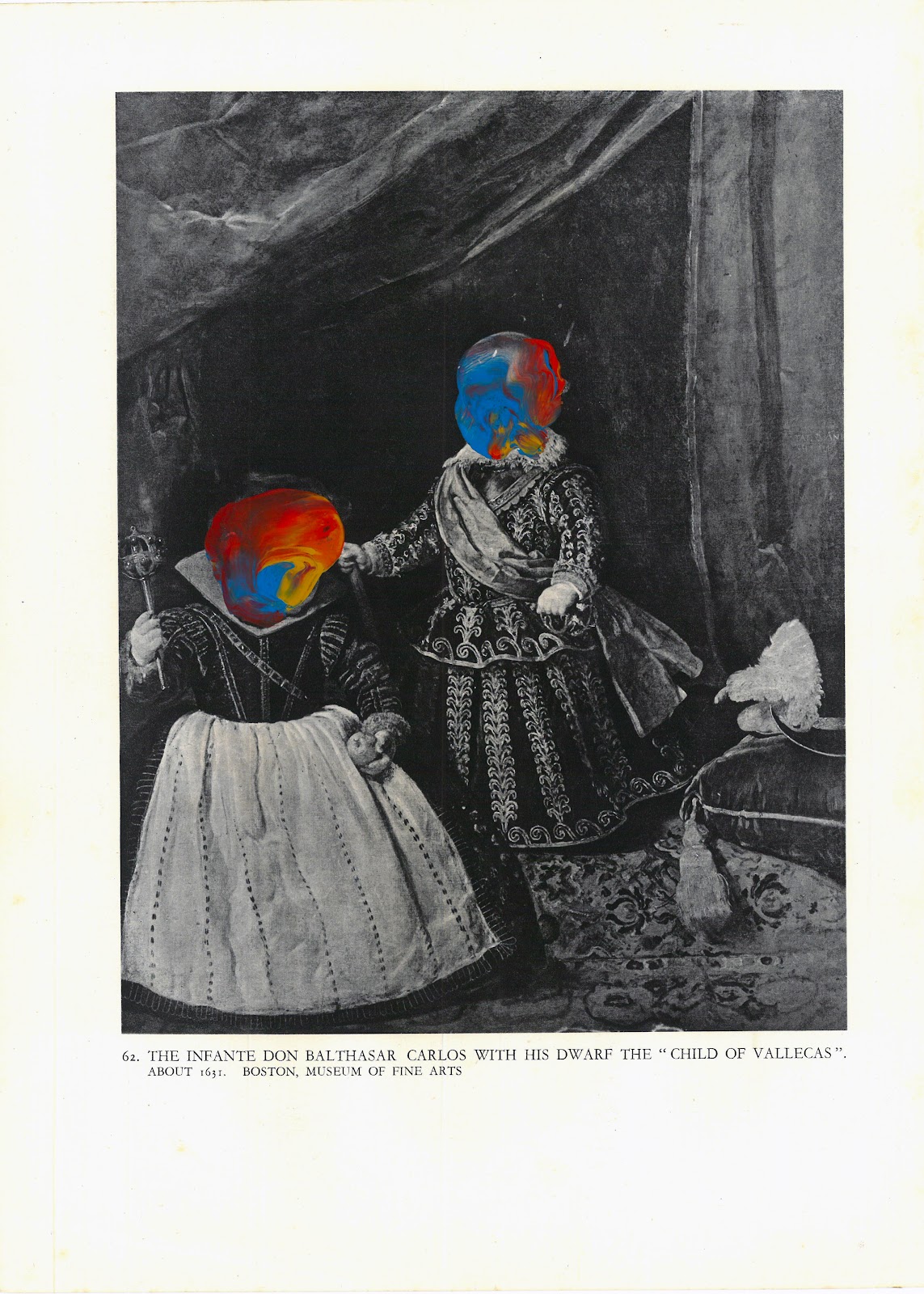It is difficult to find collaborative paintings on CoBra's legacy but sometimes we have enough luck to discover great masterpieces hidden, wrongly catalogated or cataloged in so many ways that definitely makes research and revisionism more interesting. Like the painting that we are going to talk next and that the Dutch art historian Willemijn Stokvis has cataloged as a "Cobra Modification", a painting with no title, but whose elaboration rise as a strong testimony of a "modified" painting inside the CoBrA group; an idea that Capa (Knistoff branch) has been developing since its beginning giving it a huge importance during the Capa creation process, the idea of the never-ending painting. It is well known, that CoBrA was a huge collective of artists and writers that was not limited to Copenhagen, Brussels, and Amsterdam but it transcended its limits sharing with artists and writers from other parts of Europe, like, France (Jean-Michel Atlan, Jacques Doucet), England (Stephen Gilert, William Gear), Germany (Karl Otto Götz), Sweden (Carl Otto Hultén, Anders Österlin, Max Walter Svanber) and Iceland (Svavar Gudnason), among other countries and artists that probably still remain in the shadows... When we talk about CoBrA, immediately comes to mind, the members of the Netherlands, like Karel Appel, Corneille, Constant, Anton Rooskens, Theo Wolvecamp, Jan Nieuwenhuys, Eugène Brands, Lucebert and so on, and rarely we talk about the Danish components. Everyone knows that the strongest pillar was Asger Jorn but also participated in CoBrA activities and actively: Carl-Henning Pedersen, Egill Jacobsen, Ejler Bille, Henry Heerup, Else Alfelt, Erik Nyholm, Sonja Ferlov, Erik Thomemesen, Erik Ortvad, Mogens Balle and the most important one of this little story, Richard Mortensen, who was responsable for sending this "unfinished" abstract painting to the CoBrA friends of Amsterdam via Asger Jorn and to modify it. Thanks to Willemijn Stokvis, we also know that this painting it is an oil on canvas of 1949 (size 42.5 x 62.2 cm. Now owned by the Erik Nyholm Collection) which was later modified by Erik Nyholm, Asger Jorn, Karel Appel, Constant, and Corneille, being a missing link of the only known "Cobra Modification". Even though we have more "collaborative work" testimonies, like the collective work done in Bregneröd (near Copenhague), the same house of Erik Nyholm (near Silkeborg), "One of these days" (a unique litography done in Malmö by CoBrA components of Sweden, Denmark and The Netherlands) and, some other puntual colaborations in book ilustrations (something very common in the field of collaborative arts between writers and artists) where one of the more important components of CoBrA was Christian Dotremont with a vibrant calligraphic style (from this kind of production, we can highlight the collaborations together Jean-Michel Atlan, Corneille, Karel Appel, Asger Jorn and Pierre Alechinsky) but none of these resemble the importance of a painting made as a collective modification; being Richard Mortensen a link of special interest to CoBrA. We know that Richard Mortensen (1910-1993), certainly became one of Cobra's main references due to his progressive vision of experimental art as well as for his long experience as one of the founders of the Danish school of abstract and symbolism painting "Linien" (1930-1952).
 |
| Jorn, Appel, Constant, Corneille, and Erik Nyholm painted this Cobra Modification over a Richard Mortensen oil painting in 1949. Size, 42,5 x 62,2 cm. |
Now, beyond Richard Mortensen, there were other very important components around the "Linien" group (founded in the 1930s in Copenhagen), such as Egill Jacobsen and Ejler Bille who in 1934 stated that Linien should go further its limits, go beyond Surrealism (at that time seemed to dominate the international artistic circuit) and go beyond, beyond its imaginary and the topic of the dreams to find and give free rein to expression. They proposed abandoning this oppressive model and looking at other models such as German expressionism, but at the same time, going beyond the same one that according to Egill Jacobsen had been locked in a naturalistic vision. To do this, the new model had to follow the freedom and liberation of the expression, seeking the fantasy of expression in order to find an authentically human art, a kind of spontaneous abstract-expressionism. However, and although Ejler Bille was the first to reveal himself, soon other Linien artists followed him in their ideas. This disclosure is attached to other Danish and non-Danish artists that today are linked to CoBrA (the majority of the list being announced above). The most interesting of all this is that at the core of this split appeared from the mists, the figure of a young Danish artist named Asger Jörgensen (1914-1973), who soon adopted the world-famous alias of Asger Jorn in 1945 and, who soon over time came to play a predominant role among his peers in "Linien", first as a participant in the Höst group and then as editor and founder of the magazine "Helhesten" (magazine of the Danish experimentalist artists, between March 1941 and 1944) to finally be one of the pillars of the CoBrA Movement. In this sense, we can assert that the origin of CoBrA laid the anchor on the foundations given by critical thought in "Linien" and in its eagerness to recover the expressive component in the development of the visual arts, being the recipe for German expressionism and existentialism, other foundations on which CoBrA anchored its concerns.
 |
| Linien exhibition in Tokanten 1947. Photo Richard Winther |
 |
| Linien exhibition at Lund University, Sweden 1950 |
 |
| Henrik Buch, ”Bamse” Krag Jacobsen, Albert Mertz, Kujahn Blask, and Ib Geertsen. Linien at Den Frie Exhibition Hall, 1948. |









